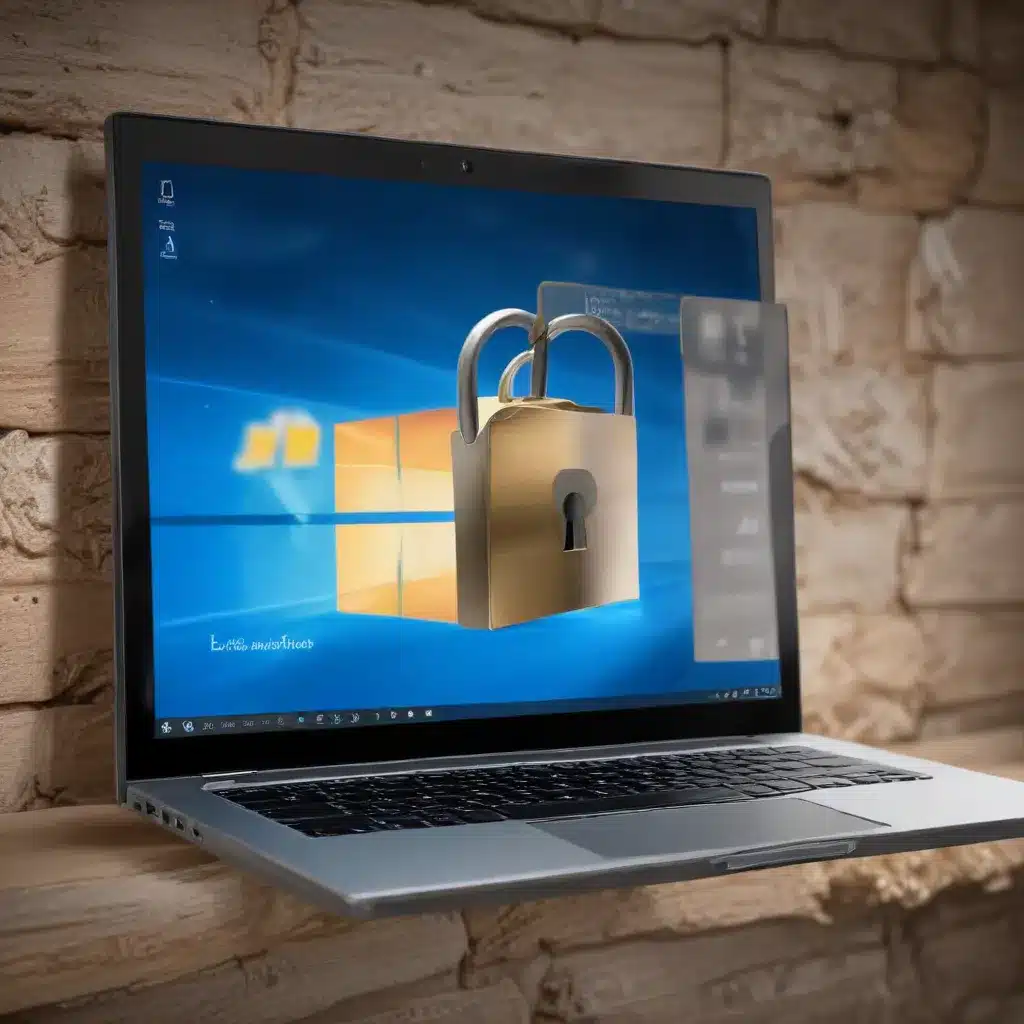
As a seasoned IT professional, I’m here to provide you with practical tips and in-depth insights on securing your Windows 10 PC using advanced encryption and BitLocker protection. In today’s digital landscape, safeguarding your data has become increasingly crucial, and I’m here to guide you through the process step-by-step.
Understanding the Importance of Data Encryption
In the era of cloud computing and remote work, your sensitive information is more vulnerable than ever before. Whether it’s confidential business documents, personal files, or financial records, protecting your data is of the utmost importance. That’s where encryption technologies like BitLocker come into play.
BitLocker, a built-in feature in Windows 10, provides a robust encryption solution that can help you secure your data from unauthorized access. By leveraging BitLocker, you can ensure that even if your device falls into the wrong hands, your information remains safe and inaccessible to prying eyes.
Configuring BitLocker for Maximum Security
To unlock the full potential of BitLocker, let’s dive into the various settings and configuration options available to you.
Enabling BitLocker Encryption
The first step is to enable BitLocker encryption on your Windows 10 device. This can be done by navigating to the Control Panel > System and Security > BitLocker Drive Encryption. Follow the on-screen instructions to set up BitLocker protection for your operating system drive, fixed data drives, and removable data drives.
Choosing the Appropriate Encryption Method
BitLocker supports several encryption methods, each with its own level of security and compatibility. For Windows 8.1 devices, you can choose between AES-128 and AES-256 encryption. On Windows 10 or later, you have the additional option of using the more secure AES-XTS-128 or AES-XTS-256 encryption methods.
Recommended Configuration: Enable the Drive encryption method and cipher strength setting and select one of the following encryption methods:
- For Windows 8.1 devices: AES-256 encryption
- For Windows 10 or later devices:
- OS drives: AES-XTS-256
- Fixed data drives: AES-XTS-256
- Removable data drives: AES-CBC-128 (for compatibility with older devices)
Leveraging Trusted Platform Module (TPM) and PIN Protection
To enhance the security of your BitLocker-protected drives, you can utilize the Trusted Platform Module (TPM) and a personal identification number (PIN) for authentication. This two-factor authentication approach adds an extra layer of protection, ensuring that only authorized users can access your encrypted data.
Recommended Configuration:
- Enable the Select protector for operating system drive setting and choose the option to use both TPM and PIN.
- Set the Minimum PIN length for startup to a suitable value (e.g., 8 characters or more) to increase the complexity of the required PIN.
Implementing Enhanced Startup PINs
BitLocker also supports the use of enhanced startup PINs, which allow for the inclusion of uppercase and lowercase letters, symbols, and spaces. This feature further strengthens the security of your BitLocker-protected devices.
Recommended Configuration: Enable the Enhanced PIN and startup key usage setting to allow users to create enhanced PINs for BitLocker startup.
Configuring Password Complexity Requirements
If your organization requires higher security measures, you can set password complexity requirements for unlocking BitLocker-protected drives. This ensures that users create strong, secure passwords to access their encrypted data.
Recommended Configuration:
- Enable the Configure password complexity for operating system drives setting and select the Require password complexity option.
- Set the Minimum password length for operating system drive to a minimum of 8 characters.
- Enable the Require ASCII-only passwords for removable OS drives setting for additional security.
Customizing the BitLocker Recovery Experience
BitLocker provides the ability to customize the pre-boot recovery screen, allowing you to display a custom message or URL. This can be useful for providing instructions or contact information to users who need to recover their encrypted drives.
Recommended Configuration: Enable the Pre-boot recovery message and URL setting and choose either the Use custom recovery message or Use custom recovery URL option, as per your organization’s requirements.
Enforcing BitLocker Compliance and Recovery
To ensure that your organization’s BitLocker policies are consistently applied and data is properly backed up, consider the following recommendations:
Automating BitLocker Key Backup
Enabling the automatic backup of BitLocker recovery information is crucial for preventing data loss in the event of a lost or forgotten recovery key. This feature ensures that you can recover encrypted data, even if the user encounters issues with their device.
Recommended Configuration:
- Enable the Automatically back up BitLocker recovery information setting.
- Configure the Client checking status frequency to a suitable value (e.g., 90 minutes) to ensure regular status updates and backup of recovery information.
Providing Exemption and Contact Options
While BitLocker encryption is essential for data security, there may be scenarios where users need to request an exemption. Offer a clear process for users to submit such requests, including a defined contact method and maximum postponement period.
Recommended Configuration:
- Enable the BitLocker user exemption policy setting.
- Set the Maximum days to postpone and configure the appropriate Contact method (e.g., URL, email address, or phone number) for users to request exemptions.
Displaying the Company Security Policy
To ensure that users are aware of your organization’s encryption requirements, you can display a custom security policy link within the BitLocker interface.
Recommended Configuration: Enable the Company security policy link setting and configure the appropriate URL to direct users to your organization’s security policy information.
Securing Your Data with Confidence
By leveraging the advanced encryption capabilities of BitLocker and implementing the recommended configurations, you can significantly enhance the security of your Windows 10 devices. This comprehensive approach will help you safeguard your sensitive data, mitigate the risks of unauthorized access, and provide a robust data recovery solution for your organization.
Remember, the key to effective data protection lies in staying informed, proactive, and adaptable to the evolving security landscape. For more IT security tips and insights, be sure to visit IT Fix – your trusted source for all things technology.












